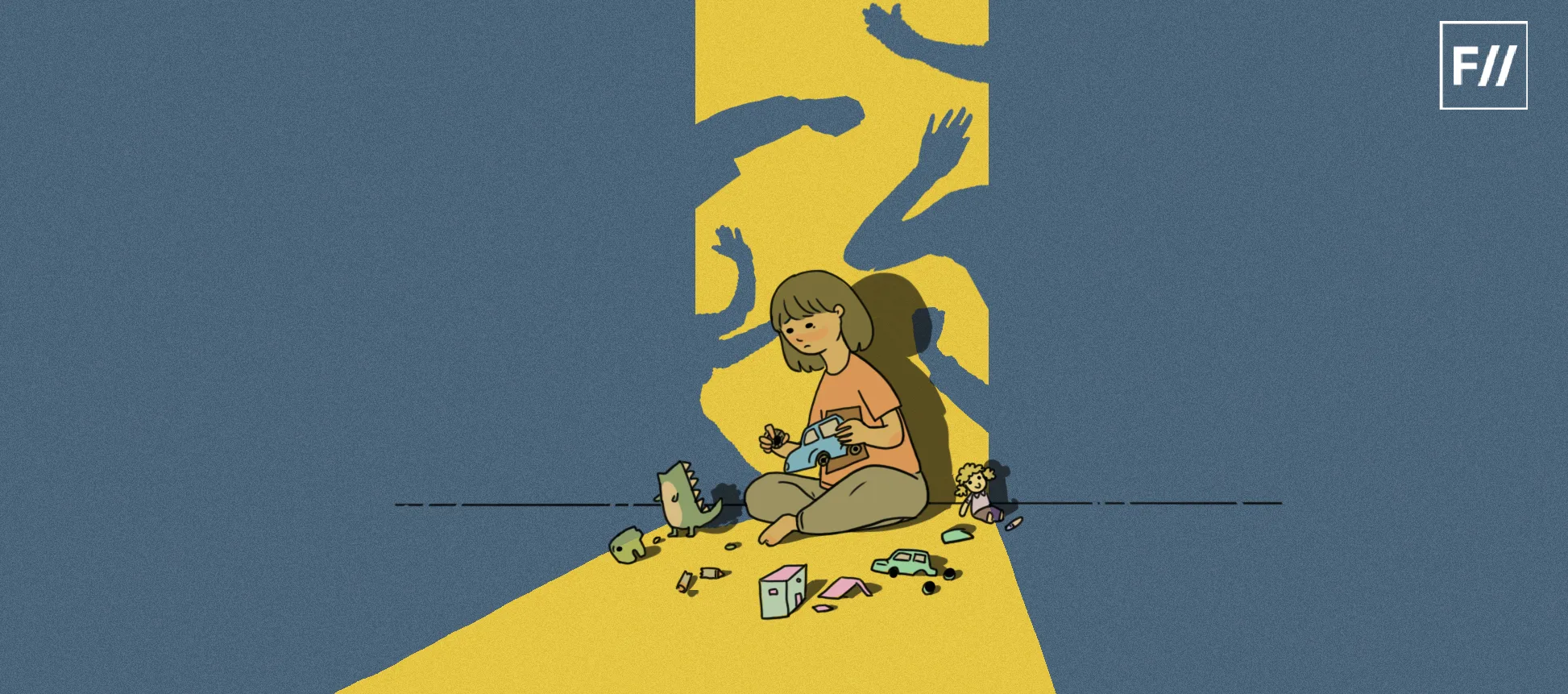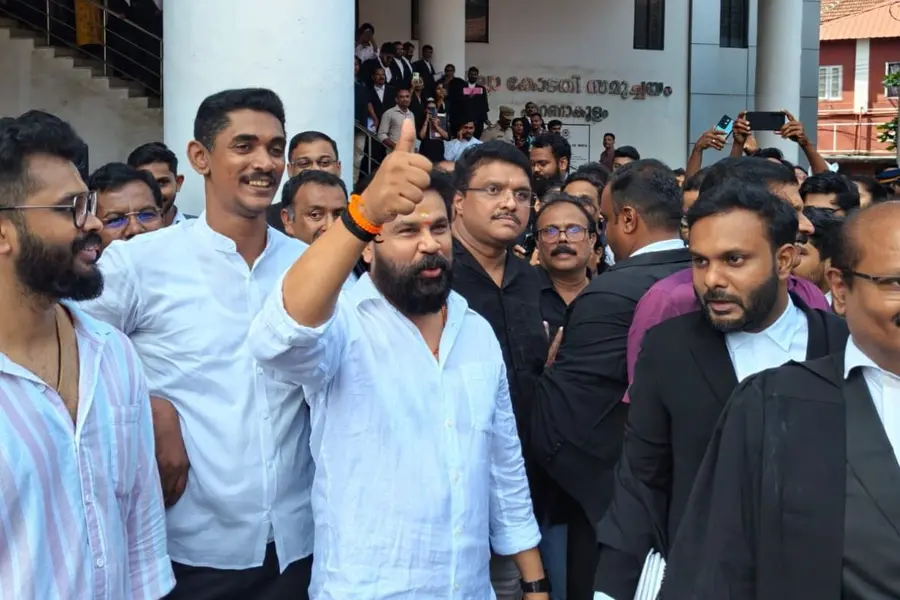By now, we are all quite familiar with the multiple, resounding clarion calls to “stay home, stay safe” because of the COVID-19 pandemic. Yet, as women with feminine experiences far from monolithic, the notions of safety, home, etc. take on a different meaning completely.
For a subset of Indian womanhood best represented by the dated term Mahila, or women of a certain status, the space outside home has always been portrayed as fraught with inexplicable horror. It is best explained by the cliched example of the lakshmanrekha, a boundary beyond which dangers lurk and transgression is punished by extreme retribution, public judgement, dishonour even death.
For a subset of Indian womanhood best represented by the dated term Mahila, or women of a certain status, the space outside home has always been portrayed as fraught with inexplicable horror. It is best explained by the cliched example of the lakshmanrekha.
My specific contention is that, even at present, such boundaries are daily enforced through various instructions and insinuations, rewards and reproach; therefore, the mantra of “stay home stay safe” , when it translates into reality especially for a woman, may seem manipulative and misleading. Both the disease and the dystopic can penetrate the walls of our homespace.

Also read: Covid-19 Pandemic & The Socio-Economic & Political Impact On Women
The Context
Knowledge of the colonized society being crucial to dominance, the British had set in motion an exploration of Hindu laws and customs. The resultant “discovery” evoked imperial consternation and criticism and forced the bhadralok to validate a perceived Aryan tradition grounded in a quite misogynistic system, namely Manusmriti (code of Manu, the ancient lawmaker).
This process led to the foregrounding of the devi/mahila and their redemption was made possible through “education” under a new civilisational matrix. Streeshikshā was specifically devised s education with a single agenda – training of an ideal Hindu woman who would bear sons and care for the family and be a compliant, efficient drone without a thought for her “self”.
The core-idea was presented first, in 1822 through a booklet entitled streeshikshāvidhāyaka, written by pandit Gaurmohan Vidyalankar and sponsored by an influential bhodrolok Radhakanto Deb, infamous for his vigorous opposition to Rammohan Ray in banning of sati which was encouraged among Hindu widows.
With the establishment of the printing press in India, a whole range of texts aimed at a female readership, flooded the market. Other than the advice manuals that attempted to project a positive image or an “ideal type”, another genre of literature emerged and developed into a critique of the “overly educated” woman. In serious essays, newspaper articles and social satires, a negative representation was conjured up and posited as a foil to the trope of the grihalakshmi – the Goddess Homemaker. This “other” woman or bibi, originally not a pejorative term, was supposedly idle, self-indulgent, arrogant, extravagant even wayward; “bibiyana” like it’s counterpart “babuyani” came to be derided as a hedonistic life style, unsuitable for the foci (literally “hearth” in Latin) of Hindu households.
The Problematic
Circling back to how education created a channel for women to step outside their homes, a shloka Kanyapevam palaneeya sikshaniyaatiyatnatah– from Mahanirvantantra, that urged guardians, “daughters too should be brought up and educated with care,” became a familiar refrain of Hindu women’s education.
Though the first line was given publicity, the second line has greater significance. It said that after a careful rearing, young women should be married off decked in gold and jewels, to suitable grooms. Grimly determined to ward off the thrill seekers, kanyapevam was emblazoned across the carriage that carried few girls to Hindu Mahila Vidyalay (1849, Calcutta) opened at the aegis of John Drinkwater Bethune, with the blessings of Iswarchandra Vidyasagar.
Later when some women, encouraged by their guardians ventured out in the Indian summer, draped in saree accessorised by full-sleeved jacket, petticoats, gloves, socks, shoes – slurs of bibiyana and worse suspicions were cast by conservatives, while common people gaped and sneered in derision.
The spread of literacy among women in an age of thriving print culture combined to create a sizeable base of women writers-readers. The reactions of the newly educated women ranged from compliance to and replication of patriarchal norms and expectations to very articulate and well-reasoned protests. Most significant is the fact that women viewed education as a pathway to spiritual elevation unlike the Hindu male agents who were focused on a “useful” education.
A powerful argument in favour of keeping women illiterate, barely literate or housebound was the utility factor. Women would not take up jobs; her vocation in life was to be a good wife and mother and hence was the stress on useful education by various agencies in the vigorous attempt to sell streeshiksha.
Education also implies a capacity to sustain oneself through individuation, personality development and maximization of inner resources leading to self-actualisation.
Without assigning culpability it can be asserted that out family and friends influence our choices. Earlier this year, Britain witnessed the emergence of the “Tradwife” Movement, which has Alena Petitt, an author and lifestyle blogger at its forefront. The movement glorifies the “earlier era” of wifely submissiveness and domesticity when women stayed back home, safe and happy, cooking and cleaning for the family.
While retrogression of this kind has often been viewed as a backlash to radical feminism, women in India know through experience the falsity of the above scenario-family space is not always a safe space, it can be supportive but it can also be coercive for the sake of some perceived values like family honour and tradition.
In 2020, the conditions created by the present crisis had cloned, in a manner of speaking, a similar situation for women as prevailed a century or more ago when they had to stay confined within the home at all times. Currently, the “stay at home” or “work from home” culture that has been spawned and appreciated by young mothers, children, aged parents, pets. Diverse groups, like telemarketers, TV and web-based serials/ film/ad makers, online business ventures could very well seduce target groups like women into staying home.
This pandemic may be an act of nature, but its management could pave the way for reinforcing an already institutionalised concept whereby women ‘rediscover’ their niche and opt to stay home in search of physical and emotional well-being, often denied to them at work space.
As a person working throughout her adult life, it requires no reminder as to how harrowing each workday experience can be. From crowded commute to lack of clean toilet facilities, from harassment at workplace to backbreaking efforts at pleasing both the employer and the family — all of these can be daunting. But the economic and physical freedom, and above all the sense of self-esteem is worth running the gauntlet.
Also read: Covid-19: Why Are Women More Vulnerable To Mental Health Issues?
Against the backdrop of the pandemic, the resultant panic and insistence to stay at home through positive and negative reinforcements, the “Tradwife” trope may emerge as a lucrative option for some women.
Conclusion
Neither the State nor the society can ensure women a modicum of safety and dignity. Against the backdrop of the pandemic, the resultant panic and insistence to stay at home through positive and negative reinforcements, the “Tradwife” trope may emerge as a lucrative option for some women.
Our foremothers in activism–Kadambini Ganguly, Anandibai Joshi, Pandita Ramabai, Sarala Ray, Abala Basu and many other known and unknown women, blazed a trail for us, fought against enormous odds to win for us the right to choose what we do with the freedom and education that has been given to some of us, let us choose wisely and with forethought.
References
Kumkum Sangari and Sudesh Vaid (eds), Recasting Women: Essays in colonial history.
Jill Radford and Diana Russell, Femicide: the poltics of woman killing.
Dr Sarmila Sarkar is the associate professor of History at Gokhale Memorial Girls’ College, Kolkata. She can be found on Facebook.
Featured Image Source: Quartz





Excellent writing with proper analysis . Thanks Dr. Sarmila Sarkar .